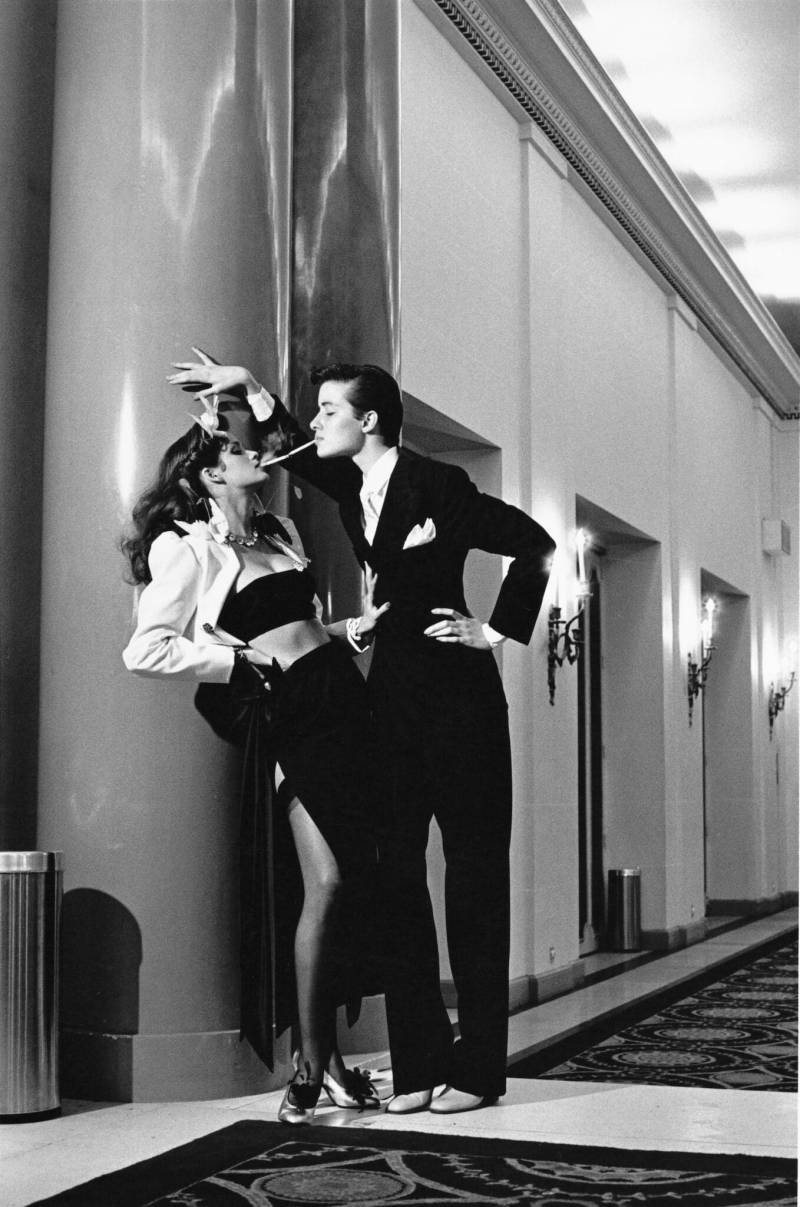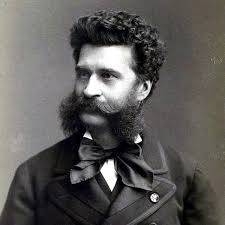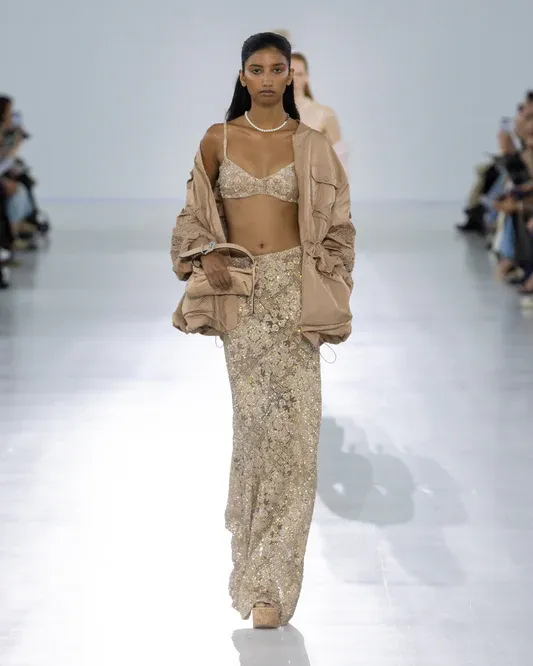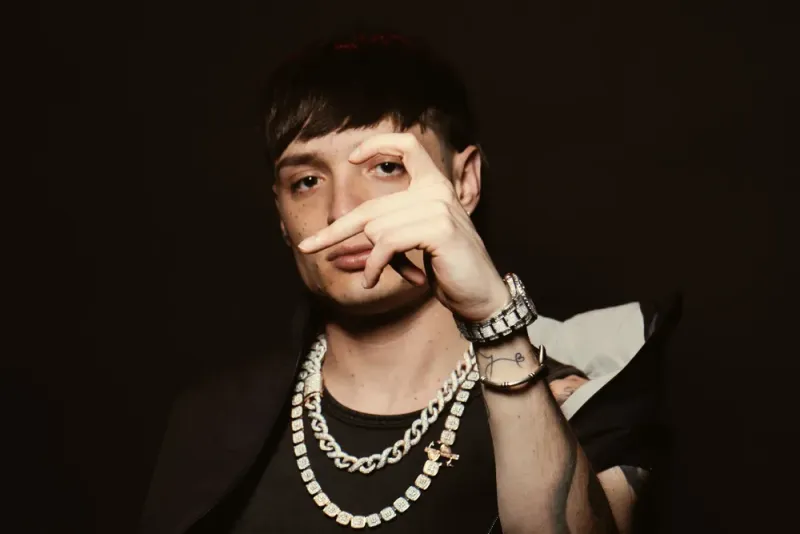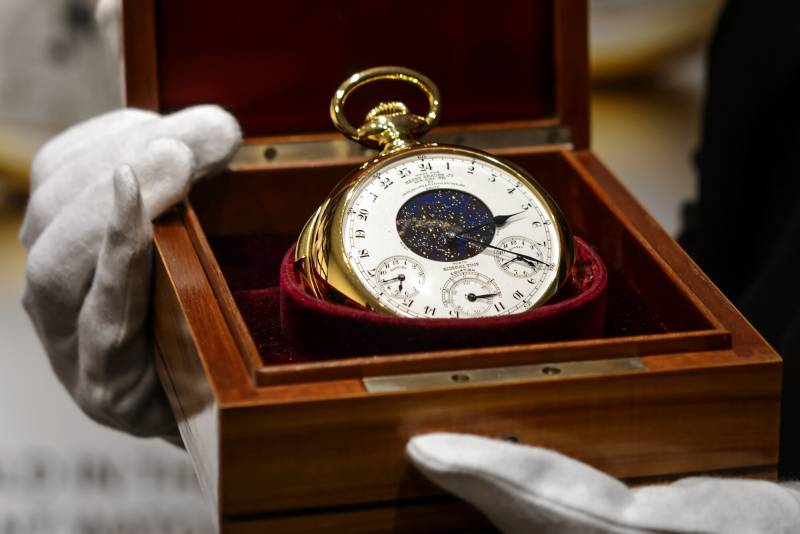Helmut Newton and Renée Jacobs co-exhibit their erotic photographs of women as subject rather than object.
Helmut Newton famously created images of female dominance that recast high fashion models as sexually liberated creatures seeking out their own pleasure. His bold mix of glamour, decadence, and noir has not only captivated the public imagination for more than half a century — it has redefined commonly held notions of fashion, portrait, and nude photography. No longer mere modes, his subjects became protagonists in highly charged dramas that drew from film, literature, and art.
“Newton was always on the trail of this zeitgeist, sometimes even ahead of it,” says Dr. Matthias Harder, Director of the Helmut Newton Foundation. Newton’s ability to create images that both defined and transcended the times in which he lived have made him one of the most influential photographers of the 20th century. As the conversation around gender and sexuality continues to advance and evolve, his work becomes even more prescient and emblematic of the current moment.
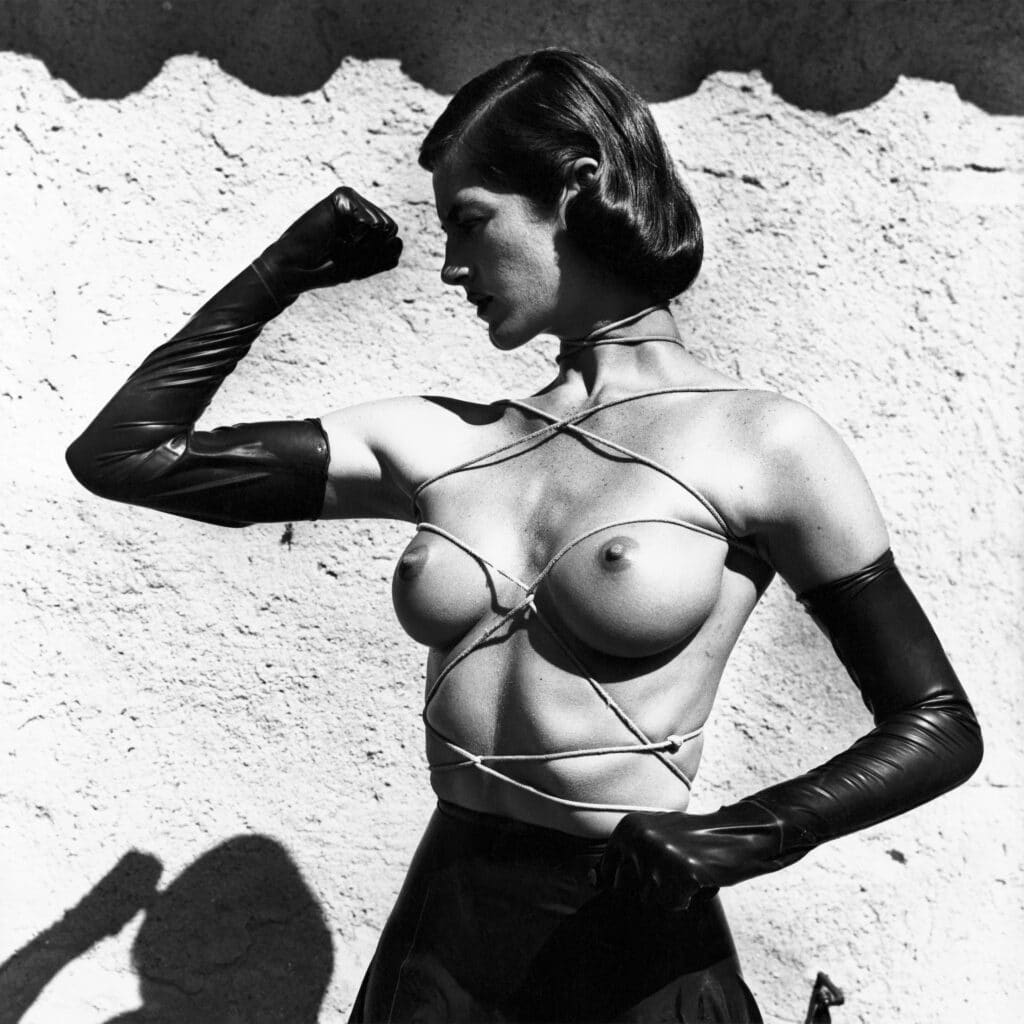
Tied-up Torso, Ramatuelle 1980 © Helmut Newton Foundation
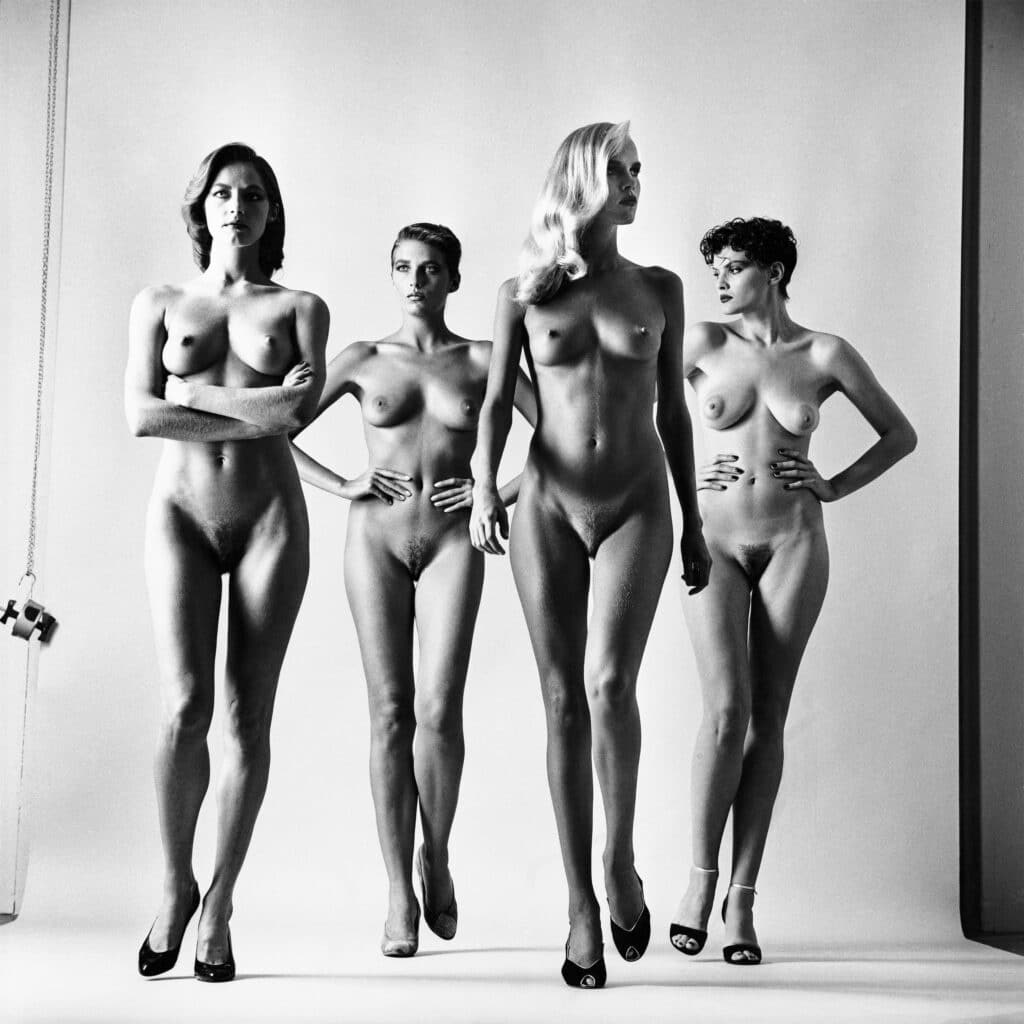
Sie kommen (naked), French Vogue, Paris 1981 © Helmut Newton Foundation
Photographer Renée Jacobs is a kindred spirit, using her work to celebrate female desire in dreamy, daring, and seductive images of women. As a lesbian focusing on the female nude, Jacobs sees beyond the binary of the male and female gaze, preferring to adopt a perspective that empowers and liberates all who engage. It is hard won wisdom gleaned through her journey from a civil rights lawyer to a photographer.
Photography helped Jacobs grapple with the challenges of being openly gay, and embrace the restorative power of her sexuality. “I was dead before I came out and have only gotten ‘younger’ as I’ve become more free,” Jacobs says. “Simone de Beauvoir said that, ‘every living moment is a sliding toward death’ but that’s not entirely accurate for so many queer people that start off dead and slide towards life as we discover and embrace who we are.”
Venus in Furs
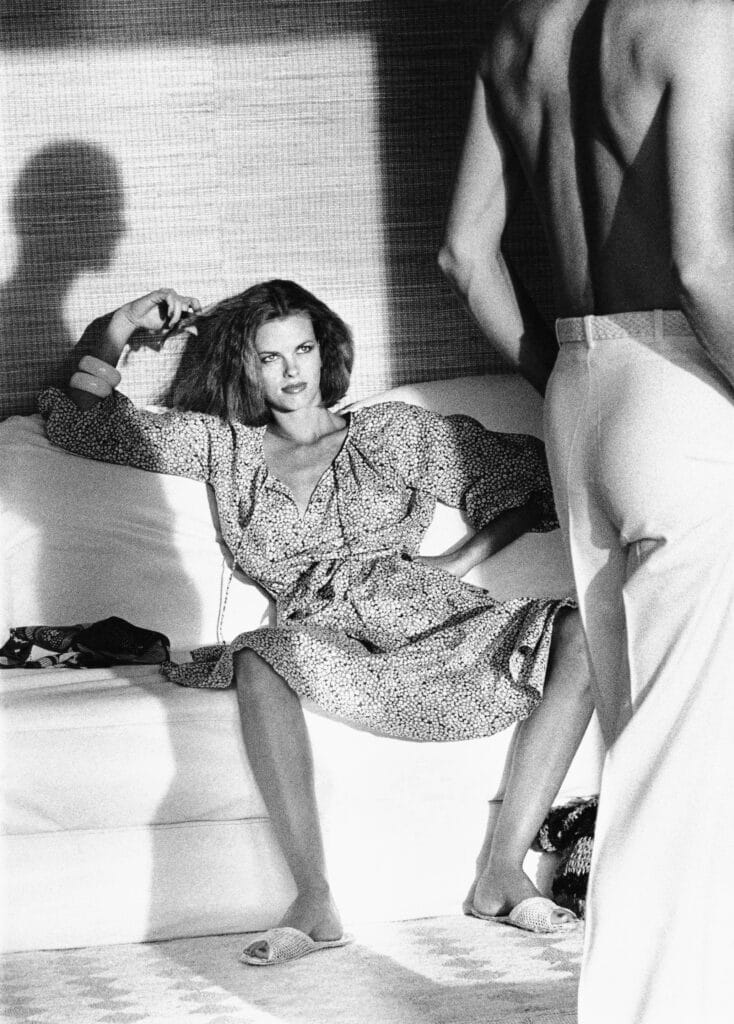
Woman examining man, Calvin Klein, American Vogue, Saint-Tropez 1975 © Helmut Newton Foundation
With the exhibition of Helmut Newton: Private Property alongside work by Renée Jacobs included in a group exhibition running concurrently, we can consider the through line between past and present, male and female, heterosexual and lesbian portrayals of female desire in photography. By creating celebratory images of women expressing their power, sexuality, and dominance, both Newton and Jacobs transform their models from object to subject, making them complex protagonists who inspire fascination and admiration in equal part.
Helmut Newton deftly confronted social constructs of female sexuality by celebrating the radical, transgressive, and subversive in his work. Born in Berlin to a wealthy Jewish family during the Weimar Republic, Newton came of age at a time when gender and sexual fluidity was openly embraced.
“The photos of two women together always had the idea of a lesbian relation,” says Sylvia Gobbel, who appears in the 1981 photograph, Self-portrait with wife and models, Vogue studio, Paris, and also modeled for Renée Jacobs’ Paris series. “Helmut Newton was open minded since his youth about homosexuality. He said Berlin in the ‘20s-‘30s before the Nazis was always a home for homosexual women or men. The show business and cabarets were showing transvestites. He grew up with all that atmosphere. That gave him great inspirations for his photos later.”
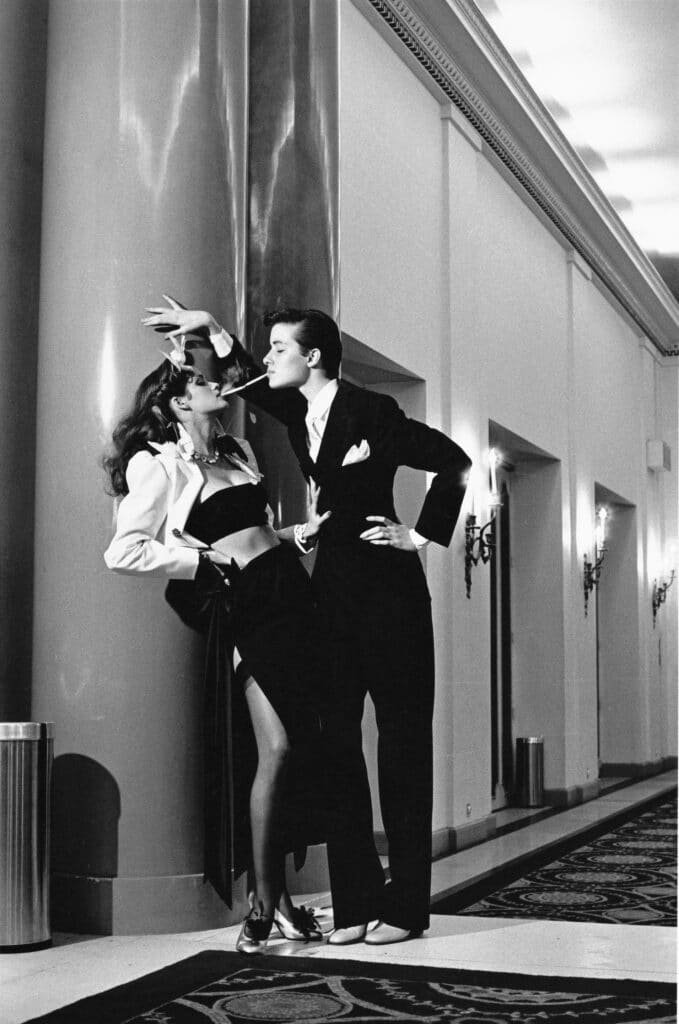
Woman into man, Yves Saint Laurent, French Vogue, Paris 1979 © Helmut Newton Foundation
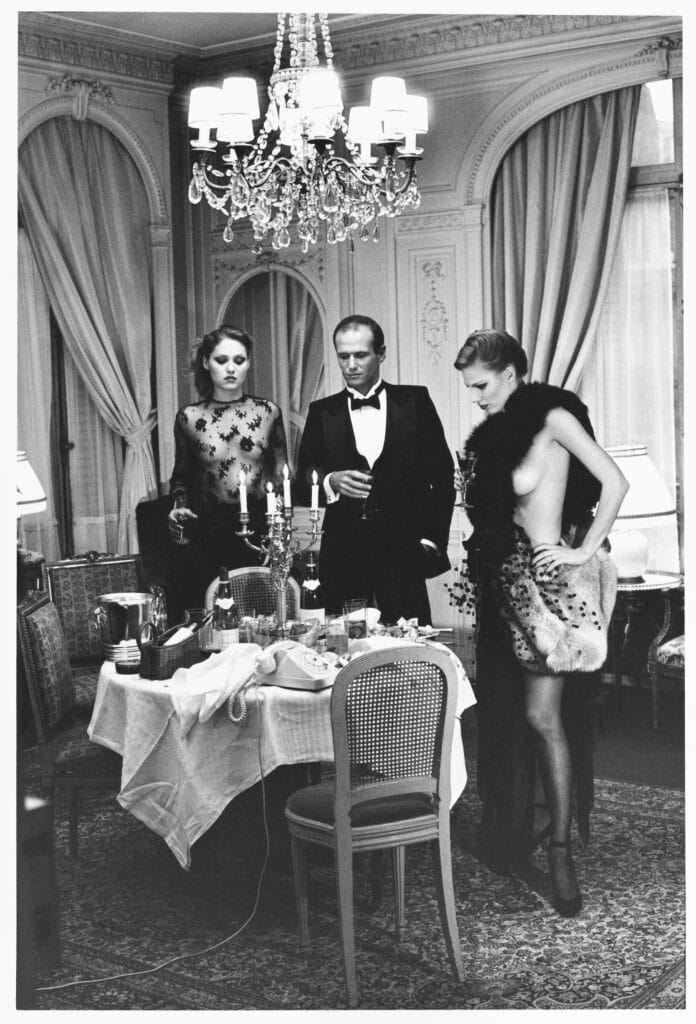
After Dinner, Paris 1977 © Helmut Newton Foundation
Throughout his career, Newton possessed an exact vision of the scene he wanted to create, taking tremendous care to ensure the image unfolded in real life to match that in his imagination. “Newton always directed the models,” Gobbel says. “His ideas were very precise. He had the story in his head and wanted to see it in front of the camera. The client knew, if he booked Newton, he had to leave him the freedom to do and shoot the product like he imagined it. The clients knew that in advance and never tried to intervene.”
Dr. Matthias Harder points to the fact that Newton almost exclusively worked on commissioned projects throughout his life, whether collaborating with magazine editors, fashion designers, or advertising agencies. To ensure he could execute his vision within the strictures of commercial projects, Harder explains, “From the 1960s onward, Newton developed an autonomous visual language that was inimitable and formative. Stylistically, he made no distinction between editorial and advertising.”
To that end, every job became an opportunity to execute Newton’s ideals on his own terms — and that began with the models themselves. “He always booked models he considered strong women with character,” Gobbel says. “He didn’t like ‘girlies’. The expression of their faces had always to be strong. Almost like an actress, always the master of their lives. Never depending on men. Male models in his pictures were considered as an accessory, ‘like shoes or bags,’ he said. The center of his photos was always the woman. He admired strong women like his wife June. Women who didn’t need a man to lean on but he could lean on her shoulders.”
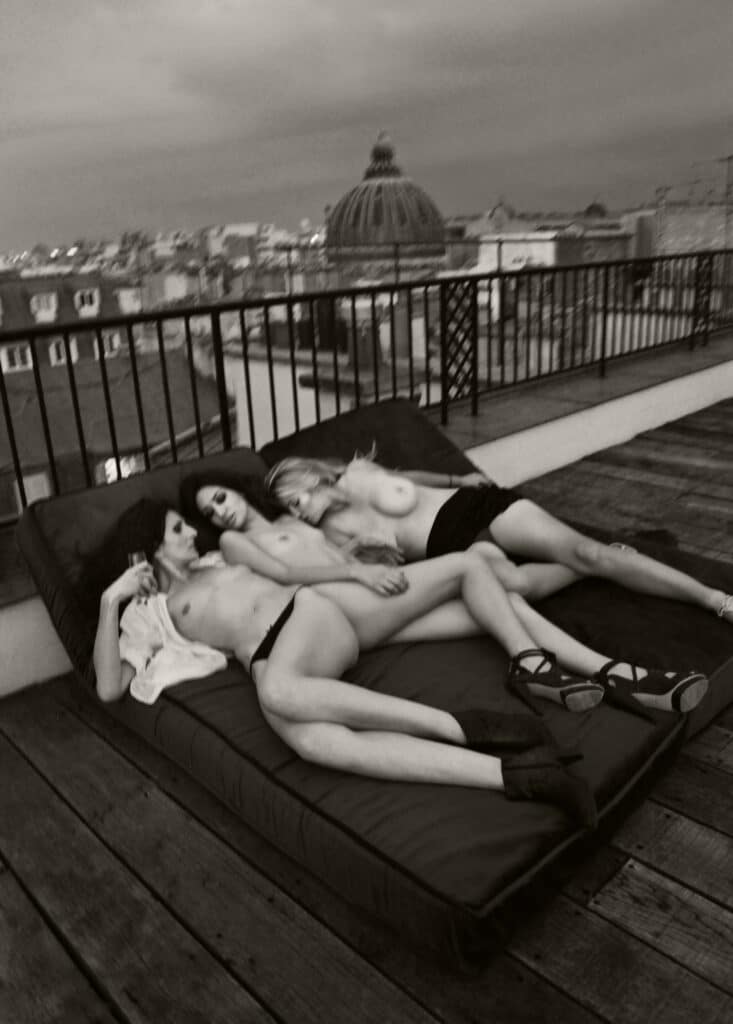
Three Girls On A Roof © Renee Jacobs
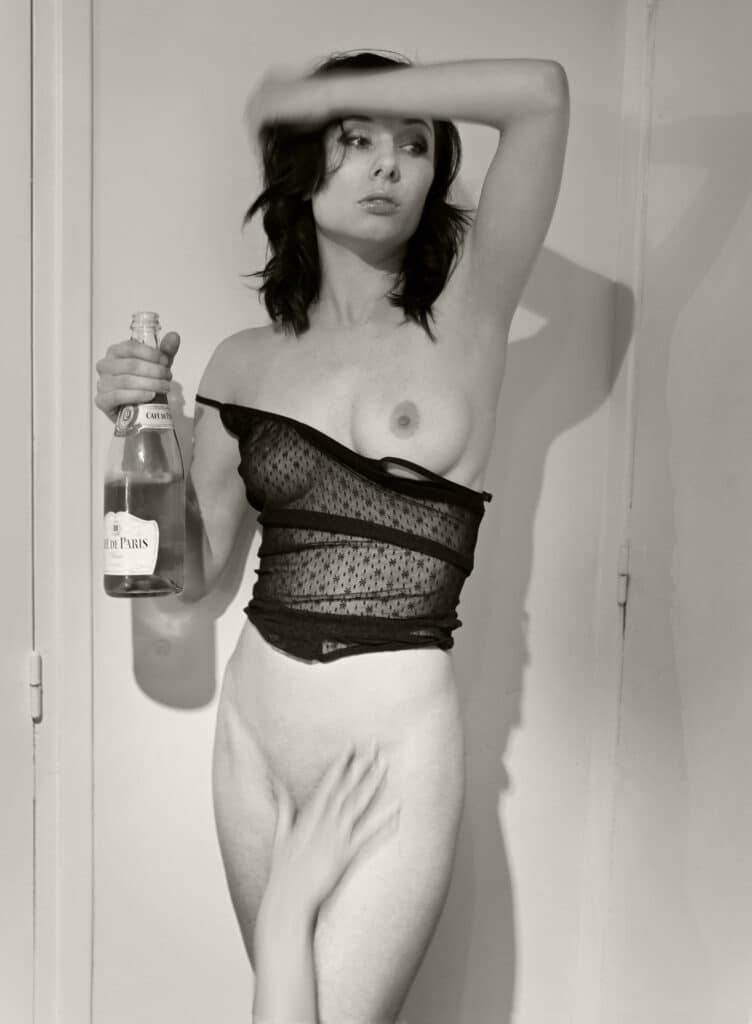
The Hand © Renee Jacobs
Velvet Underground
Renée Jacobs remembers first seeing Helmut Newton’s photographs in the late 1980s-early 1990s. “It was right around the time that I was coming out and it was validating to see the way Newton showed women as elegant, chic, and sensual in a way that I hadn’t really been seeing at the time,” she says. “Seeing same-sex images was wonderful. It opened a door. But you also knew they were actresses and it wasn’t real. I am all for people advocating for their fantasies, but it’s important to have authentic desire represented alongside that.”
For Jacobs, photography has become an integral space for artist and model alike to explore intimate aspects of female sexuality. “We all have our own needs and if we are not allowed to address them then somebody else will do it for us,” she says. “We need substance and we need context.”
Jacobs points to the introduction to her book, Polaroids, in which Gregory Forstner explores the importance of creating context for desire in the work of art. “One of the strengths of Renée’s photographs is indeed that they open up a space from which the viewer is subject to the emotions of protagonists who are the actors of their own fantasies,” he writes. “Her models seem to state that the beauty of a vision is not necessary, but that it is free as the moment is offered rather than stolen.”
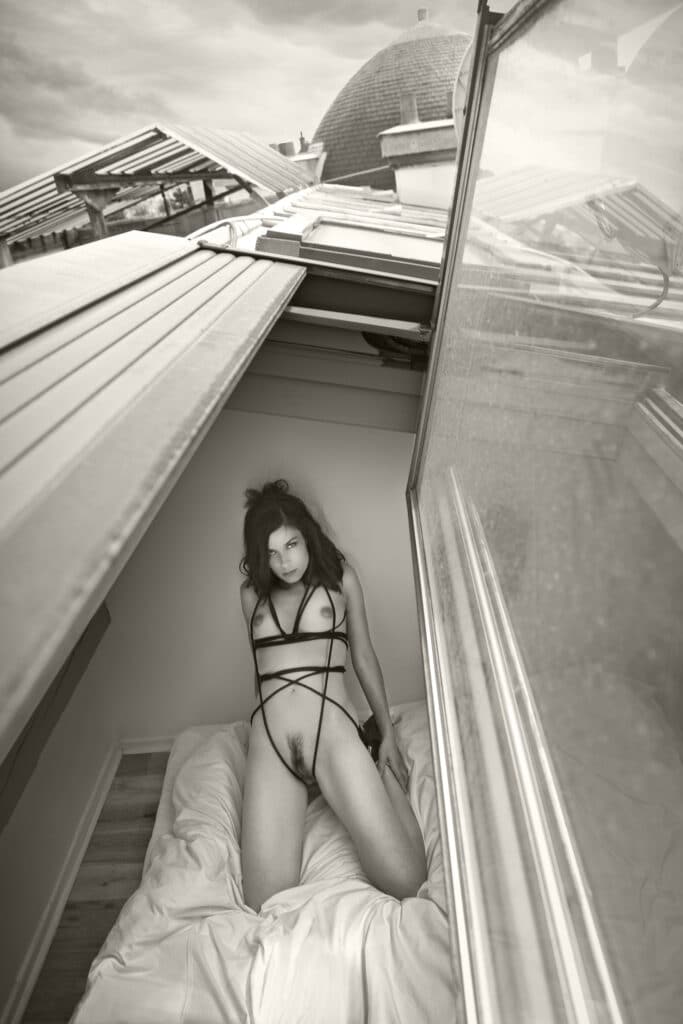
Sur le toit © Renee Jacobs
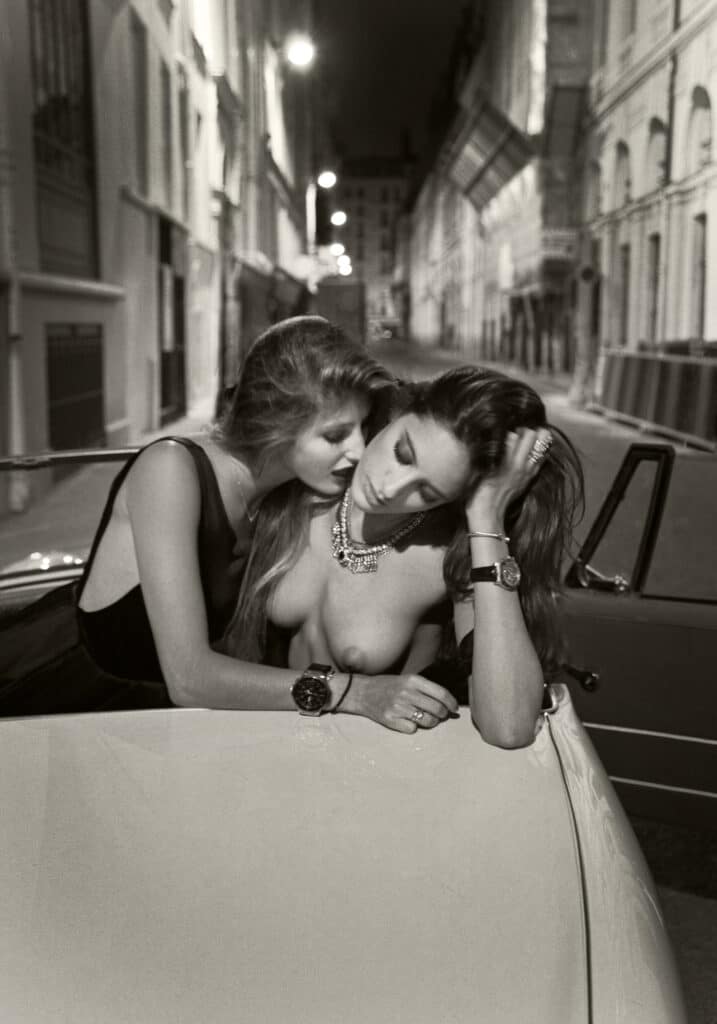
In The Car © Renee Jacobs
Eschewing the notion of the male and female gazes as too restricting, Renee Jacobs adopts an inclusive paradigm, the empowering gaze, in her work. She sees a kinship with Helmut Newton, who enjoyed a meaningful connection with his models. “These women whose careers he made and lives he changed loved and adored him,” she says, a relationship she also has with her subjects.
Jacobs shares the story of a model who discovered a passion for rope play through their collaborative work. “These women who allowed me to see their true reality was incredibly liberating for me because it lead me to see where I fit into all of this,” she says. “If you give space to people’s authentic needs and desires, you are giving them validation and allowing them to show themselves in a spectrum of diversity. There are 7 billion people on the planet; that’s 7 billion different ways to approach sexuality and sensuality. The problem only comes when you censor it.”
Work by Renée Jacobs is included in a group exhibition running concurrently with
Helmut Newton: Private Property at Fotonostrum Mediterranean House of Photography in Barcelona through July 3, 2022. Helmut Newton: Private Property is on view through July 10.
The works in the story by Renée Jacobs are not included in the Fotonostrum exhibition.
